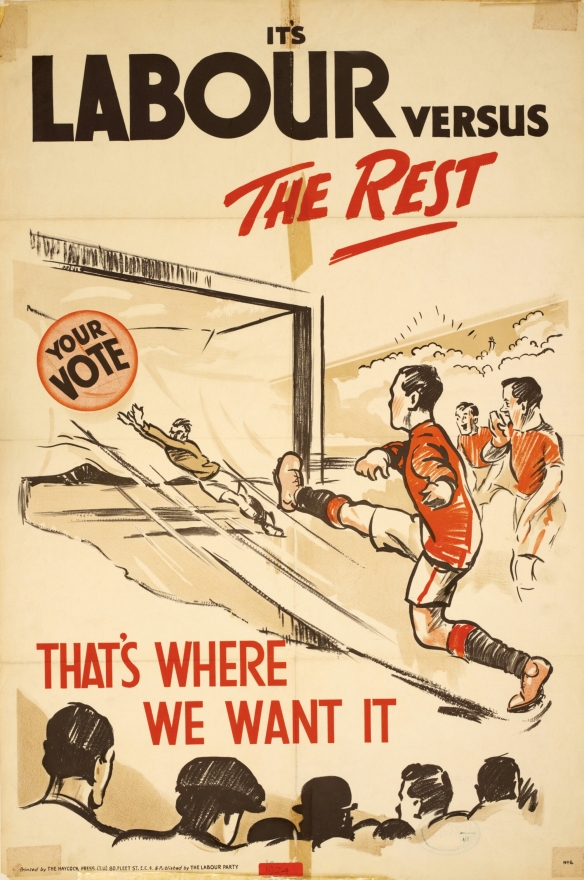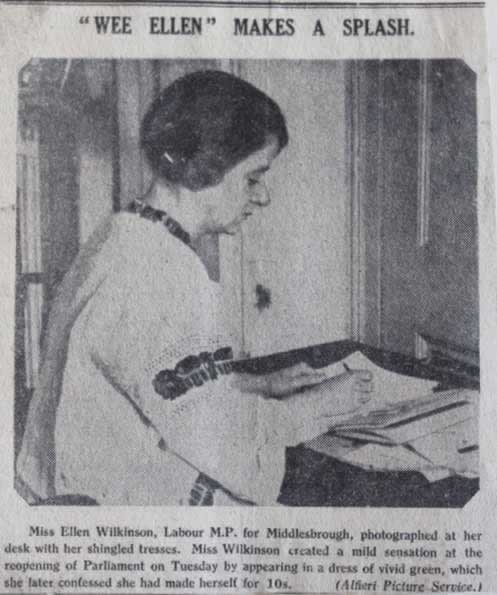Apologies for the amount of time it has taken to get to this.
We last left Ellen Wilkinson having lost her attempt to become MP for Ashton-under-Lyne in the General Election of 1923. Luckily for Ellen the 1923 election resulted in a hung parliament so there was another one called less than a year later.
In 1921 Ellen had become a member of the 6 point group, a cross-party and cross-class group whose main aim was to fight for an equalisation of the age of female suffrage. Although women had gained the vote in 1918 this was restricted to those over 30, a quirk of law that meant women such as Jennie Lee could stand for election but not vote for themselves.
The 22nd of February 1923 saw Ellen on a platform, in Central Hall, Westminster, one she shared with Nancy Astor, Millicent Fawcett and Eleanor Rathbone. The result of this weekend meeting was the agreement to campaign for equal age, equal pay, equal moral standards and equal opportunities in work. Although she was sharing a platform with middle and upper class women such as Lady Rhondda Ellen remained fiercely class conscious contrasting the opportunities and experiences of the middle class women to those of the working class women she knew and worked with.
In 1924 reforms to the Labour Party constitution has made the communist party a proscribed organisation and Ellen had to chose between the two. No member of the communist party would be endorsed as a Labour Party candidate and by this point Ellen wrote clearly wanted to become an MP. In correspondence she claimed that “It is a bitter thing to have to do… I do not hope for mercy. Goodbye Ellen Wilkinson”
Despite leaving the communist party in September 1924 (she claimed due to the methods employed by them) she continued to be a fellow traveller, promoting members of the C.P within her union and continuing a close friendship with their Manchester organiser Rajani Palme Dutt.
Having decided to stick with the labour party Ellen’s next opportunity came quickly. By October 1924 the minority labour government led by Ramsey Mcdonald had dissolved parliament and on the 29th Ellen was elected as the Labour Party MP for Middlesbrough East by 927 votes. She was only 33, the only woman (and lonely) on the opposition benches, one of only four women in parliament in total.
For a time, she said, it was as if she was dropped like a stone into a quiet pond. As a stylishly dress woman, with her bright red hair and diminutive stature, Ellen appeared a completely different kind of MP.
As she was such a small woman her feet were around 6 inches too short to reach the floor. But ever creative she started using her dispatch case as a footstool to stop her legs dangling over the edge like a small child, a position which she found ‘of extreme discomfort ‘.
Ellen made her maiden speech on the second day of parliament, in itself a rarity, to a mostly male audience (one woman) who crowded in to see her due to her youth and attractiveness. They were soon to learn that behind a demure appearance was a fiery, powerful woman who had no time for being treated as a “pet lamb”. Indeed, breaking with convention (a trend for labour women of the 20s) she delivered a rousing speech about things that made her indignant. Expecting an inoffensive and beige speech the men were blown away by her arguments for suffrage equality, increased unemployment benefits, better insurance and factory law reform. She managed to raise a cheer and her speech was week reported in the press.
Well informed… She is one of what we call the common people. She has lived among them and the whole dynamic urge of her actions is a burning passionate desire to better their lot.
Unlike many Ellen’s background in the trade union movement accustomed her to the rough and tumble which makes up Westminster. However the one thing to which she could not become immune to was the press’ fixation on what she wrote rather than what she said and would write reviews on her new frock or hair do. Indeed at one point Nancy Astor took her aside and gave her motherly advice on dressing “dull”. Sadly Ellen took good notice of this and started wearing the black and white quakeresque attire worn by other female MPs to the “great disappointment of about 600 honourable members” (Empire news)
Even with her adopting a plain dressing style Ellen was able to shake up the staid members who made up the commons. Previously women members had been squeezed into the tiny dressing room that has been put aside for Lady Astor’s use when female MPs made up a singular figure. Eventually there were 10 women using the room which had only one single pane window for ventilation, a washstand, a tin basin, a jug of cold water and a bucket. Ellen took especial offence to the lack of a mirror and the fact that women members were expected to avoid the bars, smoking rooms and members cloakrooms where the majority of the politicking was done. Certain women were also excluded from the Strangers’ dining room. It took her four years hard work but by late 1928 women were able to eat dinner there, not lunch though.
Ellen put in a large amount of work and by January 1929 had worked herself into ill health contracting a throat infection which pre-penicillin was hard to view and contributed to her lifelong condition of chest and throat infections.


